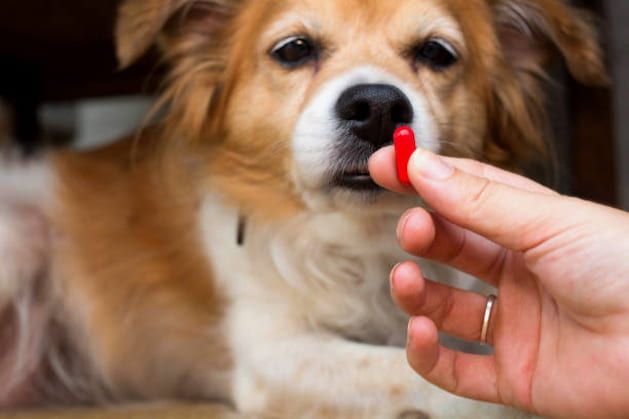Worms in dogs might be a common problem, but unfortunately, serious heart conditions also often affect our best friends. Congestive heart failure (CHF) is a condition where the heart of dogs is unable to pump an adequate amount of blood to the body. The causes of heart failure in dogs can be many, but the most important thing to know is that they can be treated if discovered on time. One of the most popular and most commonly used medications for heart failure in dogs is Vetace tablets, the main ingredient of which is benazepril.
What Is Vetace Used for in Dogs?

Benazepril is an angiotensin-converting enzyme (ACE) inhibitor that can come under different brand names out of which Vetace is the most popular. The availability and popularity of Vetace tablets on the market speak volumes about the brand’s reputation and trustworthiness.
Benazepril is a pro-drug that is designed to be metabolised by the liver. When active, this medication blocks the conversion of angiotensin I to angiotensin II which is a potent vasoconstrictor. Once its concentrations decrease, blood pressure, peripheral vascular resistance and aldosterone levels, plasma renin activity increases. When taken orally, benazepril is rapidly absorbed and is primarily eliminated by the kidneys.
This medication can also be used for treating chronic renal failure and proteinuria in dogs and cats. The reason why it’s effective in these conditions is because of the anti-hypertensive effect, renal vasodilation and the reduction in mesangial cell proliferation. All of these lead to a decrease in renal filtration pressure and decreased proteinuria.
How to Use Benazepril?
An important thing to know about benazepril is that it can be more effective for treating CHF when combined with amlodipine. On the other hand, when combined with beta-blockers it could be also quite effective for treating hypertension in both dogs and cats.

Given the fact that benazepril comes in the form of tablets, it should be given by mouth. You can give it to your dog with our without food, however, if you notice that his stomach gets upset after using the tablets, make sure you give the next doses with food. Although this medication should take effects within 1 to 2 hours, still they might not be visibly noticeable. In order to know if the medication is effective or not, you should make laboratory tests.
In case you have forgotten to give your dog the medication, give it as soon as possible, after which, it is recommended to wait the needed amount of time for the next dose. Just like with any other medication, it’s recommended not to give your dog two doses at once or an extra dose. In case of an overdose, gut-emptying protocols should be followed and done by a professional.
Side Effects
The most common side effects of using benazepril might be diarrhoea, vomiting and loss of appetite. The rare side effects of taking these medications might be incoordination and tiredness. Some serious side effects that can appear after taking benazepril are skin rash, severe tiredness and fever.

Possible Risks of Taking Benazepril
If your dog has no disease other than heart failure, then you can give it benazepril but only according to the veterinarian dosage. Benazepril is not recommended to be used on dogs that are allergic to ACE inhibitors. It should also be used with caution and under veterinarian supervision if your dog has low sodium, lupus, low blood pressure, low blood cell abnormalities and acute kidney injury.
In case your dog is pregnant, you also shouldn’t give it benazepril unless the benefits overweigh the risks. Once again, this should be done by your dog’s veterinarian, because they’re well aware of its health condition and know what’s best for it and what can cause problems.
Drug Interactions
Benazepril should be used with caution, especially if taken with aspirin, alpha-2 adrenergic agonists, allopurinol, apomorphine, benzodiazepines, diazoxide, fenoldopam, glycerine, heparin, etc. However, considering the fact that your veterinarian knows your dog health history, he/she already knows whether to give benazepril to your dog or not.

How to Store Benazepril?
This medication should be stored at room temperature below 30°C, in a dry place. In case you accidentally have removed a tablet from the blister, make sure to use it within 1-2 days.
As you can see, this is a powerful and quite helpful medication that could help your dog. However, it should be taken only when prescribed by the veterinarian. Otherwise, you risk creating more health complications for your dog that could be dangerous, if not fatal.


